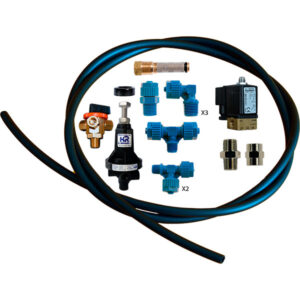Descripción
The valve limits the flow downstream to a preset value, regardless of pressure changes upstream of it. The valve opens fully if the flow rate is less than the preset value. This valve is actuated by system pressure and is normally partially open to allow constant downstream flow.
This type of valve avoids excessive consumption, pressure drop and supply deficiencies to other points.
Characteristic:
- It does not need external energy, the energy is received from the water that circulates through
- The pipe.
- Simplicity in design, construction and operation.
- Stable and precise control of the flow at the outlet.
Function:
The flow rate is determined by the pressure drop that occurs in an orifice plate placed upstream of the valve, which is sized for this purpose. As the flow rate increases, the head loss increases. The pressure difference between both sides of the plate is detected by the pilot that acts by opening or closing the valve depending on the case.
The pilot has a screw in its upper part through which it is possible to adjust the pressure drop allowed in the orifice plate, and therefore the flow of water through the valve. Tightening the screw to the right increases the maximum allowed flow rate and reduces it by turning it to the left.
When the flow increases as a result of a fluctuation in demand, the increase in the pressure drop produced in the orifice plate causes the pilot to change position. When this happens, the flow decreases until it reaches the adjusted value again and the pilot stops sending pressure to the chamber, leaving the valve in a new state.
fixed regulation position.
Applications:
- The flow limiting valve is used when you want to control the flow of water supplied by the valve.
It can be made in polyethylene tube and copper tube.
For any assembly consult.




